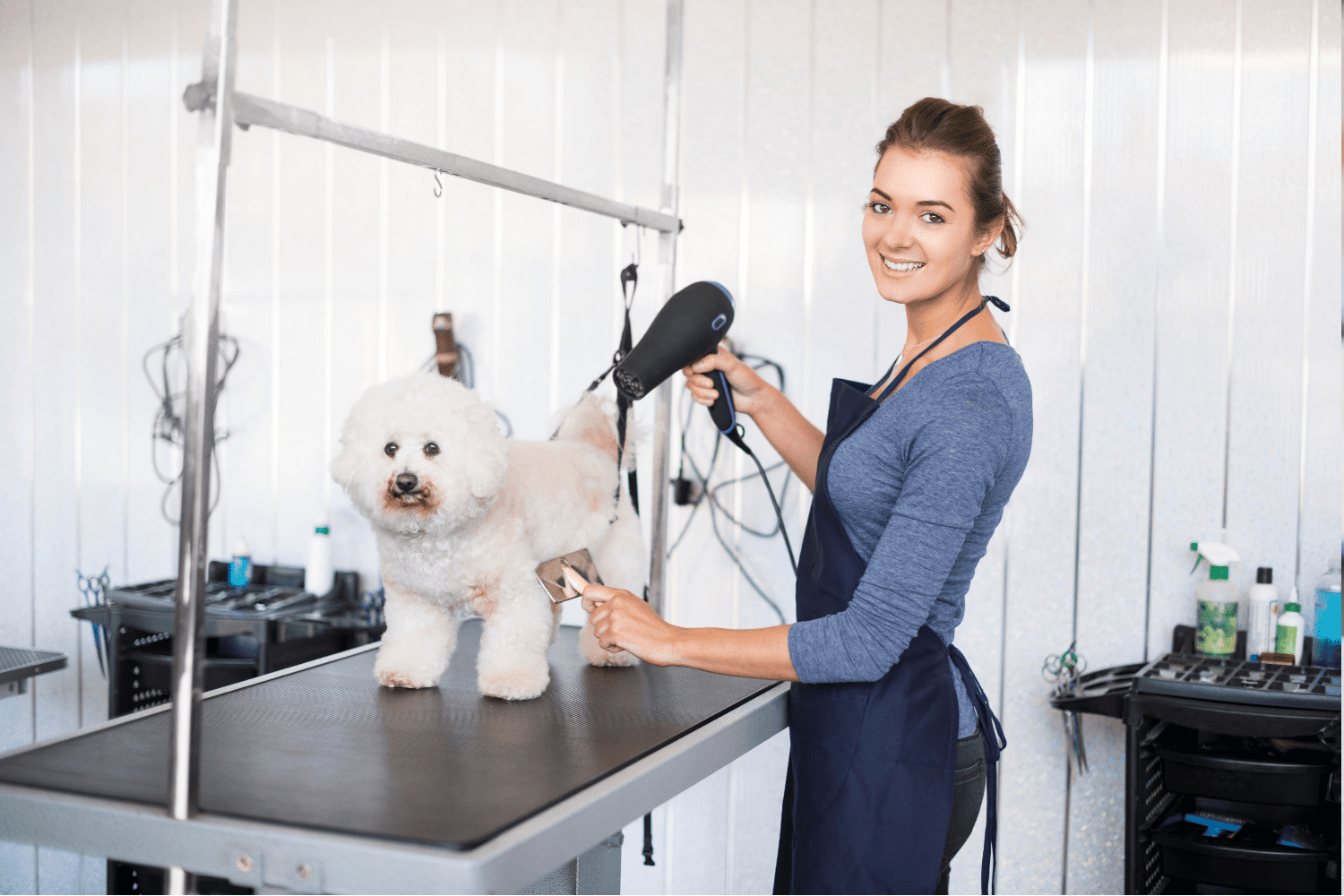For many pet owners, grooming is simply a way to keep their furry companions looking their best. But regular grooming goes far beyond aesthetics. It’s a crucial aspect of pet health and well-being, offering a range of benefits that contribute to your pet’s overall happiness. This comprehensive guide will delve into the world of pet grooming, exploring its importance, different grooming techniques for various pets, and helpful tips for a smooth grooming experience.
Why is Pet Grooming Important?
Regular pet grooming offers a multitude of advantages for your pet’s health and comfort. Here’s a closer look at some key benefits:
- Improved Coat and Skin Health
Brushing removes dirt, dead hair, and debris, promoting healthy blood circulation and natural oil distribution. This keeps the coat shiny, prevents matting, and helps identify potential skin problems like fleas, ticks, or infections early on.
- Reduced Shedding
Brushing removes loose hair before it sheds around your home. This is particularly helpful for breeds with heavy coats.
- Early Detection of Health Issues
During grooming, you can check for lumps, bumps, rashes, or other abnormalities on your pet’s skin. Early detection of health concerns can lead to timely treatment and better outcomes.
- Enhanced Comfort
Mats and tangles can be painful for pets. Regular grooming prevents these from forming, keeping your pet comfortable and happy.
- Strengthens the Bond
Grooming provides a dedicated time for you to bond with your pet through gentle touch and interaction.
Grooming Techniques for Different Pets
The specific grooming needs of your pet will vary depending on the breed, coat type, and overall health. Here’s a breakdown of grooming techniques for some common pets:
- Dogs
- Brushing frequency depends on breed. Double-coated breeds like Huskies require daily brushing, while shorthaired breeds like Pugs might need it just once a week.
- Bathing frequency also varies by breed. Consult your veterinarian for a recommendation based on your dog’s skin and coat type.
- Nail trimming is essential to prevent discomfort and potential injuries from overgrown nails.
- Ear cleaning should be done regularly to prevent infections.
- Cats
- Most cats are excellent self-groomers. However, brushing regularly helps remove loose hair and prevent hairballs.
- Occasional baths might be necessary for longhaired cats or those with skin problems.
- Regularly check and clean your cat’s ears to prevent ear mites and infections.
- Trimming nails might be needed if your cat doesn’t wear them down naturally through scratching.
- Small Pets
- Rabbits and guinea pigs require regular brushing to remove loose fur and prevent matting.
- Chinchillas require dust baths instead of water baths to maintain their fur’s health.
- Hamsters and gerbils can be spot-cleaned with a damp cloth if necessary.
DIY Grooming vs. Professional Grooming
You can certainly groom your pet at home with the right tools and techniques. However, professional groomers offer a range of benefits:
- Expertise
They have the knowledge and experience to handle different breeds and coat types effectively.
- Specialized Equipment
They have access to professional-grade grooming tools for a more thorough and efficient job.
- Difficult Tasks
They can handle tasks like nail trimming or anal gland expression that might be uncomfortable for you to do at home.
- Stress Reduction
Professional groomers are skilled at handling pets, making the grooming process less stressful for them.
The decision ultimately depends on your pet’s needs, your comfort level, and budget.
Tips for a Smooth Grooming Experience
Here are some helpful pointers for a positive grooming experience for both you and your pet:
- Start Early
Introduce grooming to your pet when they’re young to get them accustomed to the process.
- Create a Positive Environment
Make grooming a positive experience with treats, praise, and gentle handling.
- Gather the Right Tools
Invest in high-quality brushes, combs, shampoo, and other grooming essentials specific to your pet’s needs.
- Be Gentle
Avoid harsh brushing or pulling on tangled fur. Work on mats patiently with a detangling spray.
- Take Breaks
Don’t overwhelm your pet. Take short breaks with praise and petting during longer grooming sessions.
- Reward Good Behavior
Positive reinforcement keeps your pet motivated and cooperative.
Conclusion
Regular pet grooming is an essential part of responsible pet ownership. It promotes good health, prevents discomfort, and strengthens the bond between you and your furry friend. By following the tips and techniques outlined in this guide, you can ensure that your pet receives the care they need to stay happy and healthy.
Also Read: https://usatimenetwork.com/




